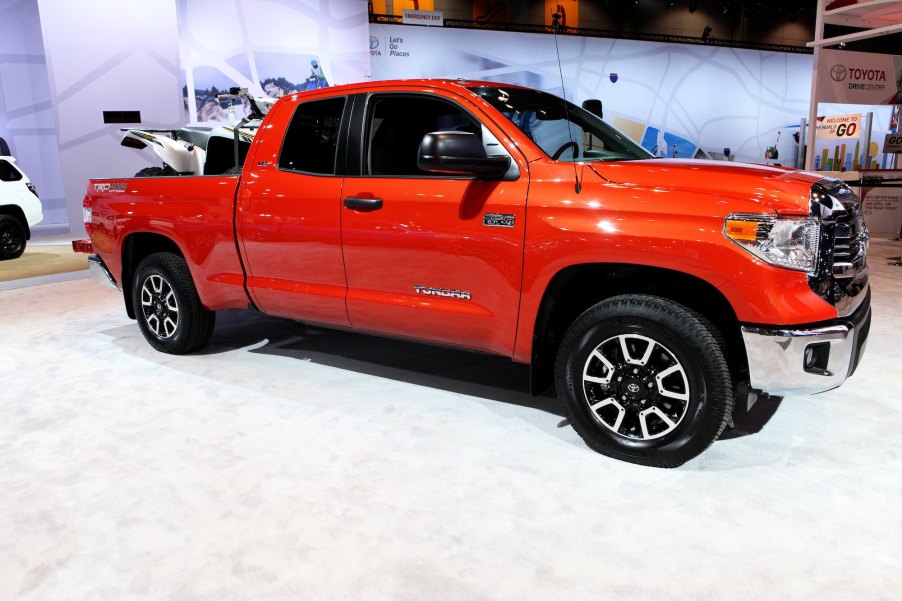
The 2017 Toyota Tundra Has a Few Minor Trouble Spots
If you’re looking for a good used truck, the 2017 Toyota Tundra has a lot to offer. It’s a big, capable truck with towing capabilities and off-roading chops. Does it have some trouble spots? Like any other vehicle, absolutely.
Are the Tundra’s issues enough to send you looking at other trucks? Read on to learn about the few minor problems with the 2017 Toyota Tundra.
Reliability ratings
Many people consult consumer sites such as Consumer Reports to learn all they can about a potential vehicle before making a purchasing decision. It makes sense because a vehicle is often a costly investment. One of the ratings that CR assigns to vehicles is predicted reliability.
Also known as a new car prediction, the predicted reliability rating is an expert opinion on how well the current model is likely to hold up over the first few years of ownership. These predictions factor in previous ratings and substantial new changes. The rating is important because a better rating is usually, but not always, an indication the vehicle is less likely to have major issues.
CR rates vehicles on a predicted reliability scale of 1 to 5. Over the past several years, the Toyota Tundra has earned good predicted reliability ratings, either 4 or 5 out of 5, from the consumer site. But in 2017, the rating dipped to 3 out of 5.
Evaluated in 17 categories for Consumer Reports‘ predicted reliability rating, the 2017 Toyota Tundra earned 3 out of 5 for body, trim, and paint issues. It received a 2 out of 5 for power equipment, which pulled down its overall reliability rating.
Power equipment
What does CR mean by power equipment? The rating pertains to clocks, cruise control, body control modules, and keyless entry. It also refers to the exterior and interior lighting, horn, gauges, tire pressure monitors, and wiper motors or washers. Cooled or heated seats, USB ports, alarm systems, 12V power plugs, and remote engine start functions also fall under this category.
Consumer Reports’ review of the 2017 Toyota Tundra didn’t specifically mention why the power equipment was marked down as it was. There were no customer comments listed for the category in the rating either.
In most of the other categories, the 2017 Toyota Tundra gets top marks. The suspension and brakes are slightly marked down. The CR review offered an explanation for these by highlighting the truck’s sometimes “jittery ride” and mediocre braking experience.
Should the predicted reliability rating put you off from considering the 2017 Toyota Tundra?
Knowing the real problems
If you’ve been driving for a while, you know all vehicles have problems and inconveniences. But not all vehicular issues are equal.
Looking at what CR defines as power equipment, you have potential problems that are more minor. Most of the equipment presented in the category has the potential to pose annoying inconveniences. Problems with keyless entry or wiper motors can start your day off on a bad note.
But most of the problems with those functions don’t pose safety hazards or costly repair bills.
If you’re looking at the predicted reliability of a vehicle at CR and see it marked down for engine or transmission issues, that’s when you need to do some homework. Engine and transmission problems can result in repairs or replacements that cost several thousand dollars. They can also mean threats to your safety and time without your vehicle.
By all accounts, the 2017 Toyota Tundra has minor flaws. But at the end of the day, it’s a capable truck that might be the used truck you’re looking for. As with any used vehicle, do your research and ask a qualified technician to check it before you buy it.


